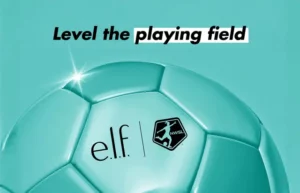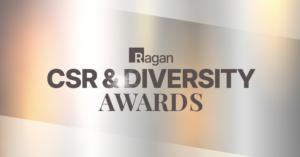How to keep inclusive messaging policies fresh
Learn how to craft and keep up-to-date with language and image policies that keep all employees feeling safe, seen and respected.

Inclusive messaging matters in the workplace. Organizations that champion inclusion are two times as likely to meet or exceed financial targets, three times as likely to be high performing, six times as likely to be innovative and agile and eight times as likely to achieve better business outcomes according to a report published in the Deloitte Review. And as the voices, wordsmiths and culture conduits of these organizations, communicators help shape inclusion with every word they choose.
Organizations unlock reach, authenticity and trust when they champion inclusive messaging in the workplace. But inclusion isn’t one-and-done: It’s an ongoing process. To stay-up-to-date, communicators should keep apprised of preferred and respectful language to use, how to represent your audience in your visuals, and accessibility tips for presentations.
Lucy Abreu, executive vice president of Syneos Health Communications, offered her best tips for keeping inclusive communications practices up-to-date during Ragan’s recent Writing Certificate Course.
Keeping your policy fresh
Language and other means by which we express respect for one another have evolved, and it’s up to communicators to keep apprised of preferred terminology. Abreu advised attendees to combat the use of harmful language by pausing before speaking and being intentional about eliminating inappropriate phrases.
She cited “crack the whip,” “namaste,” “that’s crazy,” “lame” and “low on the totem pole” as examples of culturally insensitive, stereotyped or ableism-infused language that she still hears today, and that communicators and leaders would do well to educate employees about.
Another term to beware of is “minority.” Instead, Abreu suggests using the specific, preferred name of communities and demographics. Additional alternatives include “historically marginalized communities,” “individuals with marginalized identities” and either “historically underrepresented communities” or “underestimated communities.”
Writers and communicators may benefit from erring in favor of person-first over identity-first language, and asking people for their preferred identifiers. In practice, this may mean using phrases such as “person living with a mental illness” instead of describing someone as “mentally ill.”
And if you’re unsure about the best terminology for an individual or community, “don’t assume, just ask,” Abreu said. Some people with hearing loss simply prefer to be identified as “deaf” or “hard of hearing.”
Consider the language you use when you ask for preferences as well. The phrase “preferred pronouns” is commonly used during introductions, but it implies a choice about one’s gender identity that may not apply to everyone. Instead, ask “what are your pronouns?” or ask for “identified pronouns.”
If — and when — you use a weaponized phrase, intentionally or otherwise, Abreu advised apologizing and correcting yourself in real time. A champion of inclusive language has the power to give others the courage to do better on the spot.
Instead of “calling out” a colleague, Abreu says to “call in.” Rather than embarrassing or criticizing someone who uses insensitive language, “calling in” describes addressing the language intentionally, respectfully and with genuine care for the recipient. It involves approaching them with the aim to educate and provides space for them to reflect on their word choices without feeling attacked or undermined.
Accessible, inclusive imagery
Storytellers are often responsible for choosing accompanying photos to amplify their messaging.
When choosing imagery for communications materials, Abreu suggests considering exactly what you want to show. For example, people with disabilities have critiqued imagery about their community because the default tends to be a person in a wheelchair — but disabilities come in many shapes and sizes, and some are invisible. Considering the audience’s perspective and preferences and researching your stakeholders allows you to select imagery that accurately and holistically reflects them.
“This is a business opportunity,” Abreu said. “If you want to expand your market, understand who is there and how to best reach them — how to show them that they exist through their imagery and through your writing.”
Most communicators know to use alt text or closed captions in communications materials. Abreu cited these practices, but also discussed additional accessibility considerations.
For example, to make visual presentations and PowerPoints accessible, ensure that color choices create a high contrast between the background and text color, and use a simple, familiar and easily parsed font that improves readability. Sans serif fonts including Verdana, Tahoma, Calibri and Open Sans are recommended as highly readable by organizations that advocate for people with reading disabilities.
The “check accessibility” feature in PowerPoint also allows communicators to create inclusive experiences for colleagues, clients and audiences. The software provides lists of accessibility issues and suggestions for changes on the right-hand side.
Our perceptions of meaning, message and bias evolve as our cultures change and grow. As you shape your organization’s policies around inclusive language, images, videos and more, keep an eye on policy updates from organizations such as the APA, the CDC and advocacy groups that represent historically marginalized communities, and when in doubt, ask employees and staffers directly.
Callie Krosin is an editorial intern at Ragan Communications and PR Daily.






